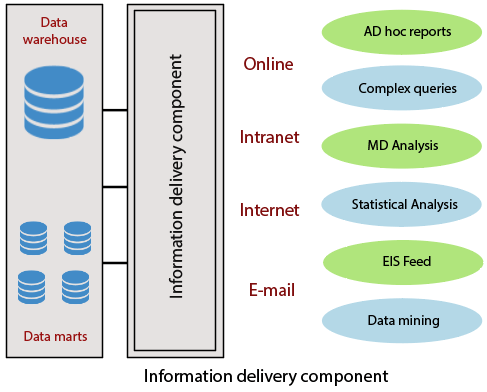Warehouse Supervisor (1 years diploma)
Warehouse Supervisor click here
Brief Job Description
Warehouse Supervisor in the Logistics industry is also known as Supervisor, Warehouse In-Charge.
Individuals in this role need to collect components required to obtain the required lists and information
from the Data Entry Operator (DEO), plan the schedule for the day, allocate work to workers and oversee
them for successful completion. Their responsibilities include solving operational issues in the warehouse
and ensuring smooth operations.

Personal Attributes
This job requires the individual to have a detailed understanding of all the warehouse activities and keen
observation skills to identify and rectify errors. The individual should also be skilled in operational problem solving.
Minimum Educational Qualification &
Experience
Graduate (in the relevant field)
OR
Graduate (in any field) with 1 Year of
experience relevant experience
OR
Diploma (2-year Diploma (after 12th Class)
in the relevant field) with 1 Year of
experience relevant experience
OR
12th Class with 4 Years of experience
relevant experience
OR
10th Class (+ 2 years of ITI) with 2 Years of
experience relevant experience
OR
Certificate-NSQF (Warehouse Executive –
level 4) with 2 Years of experience relevant
experience
Minimum Level of Education for Training in
School
Pre-Requisite License or Training Training in planning and scheduling
operations
Minimum Job Entry Age 18 Years
Last Reviewed On NA
Next Review Date NA
NSQC Approval Date
Version 3.0
Prepare for the days work
Description
This OS unit is about preparing for the days work.
Elements and Performance Criteria
Collect information lists and relevant documents
To be competent, the user/individual on the job must be able to:
PC1. obtain sufficient copies of the pick list, bill of materials (bom) and incoming truck schedules
from the data entry operator (deo)
PC2. obtain an inventory tracking sheet from the deo to use for cycle counting.
PC3. collect printed product labels from the deo
PC4. mutually agree on priorities and deadlines related to customer orders with the deo after
discussing labor availability.
PC5. find out from workers if there is any pending work from the previous day.
Schedule Activities and allocate tasks
To be competent, the user/individual on the job must be able to:
PC6. based on the information obtained, estimate the time required for each task and create a day
plan for the entire warehousing operations.
PC7. create specific day plans and set numeric targets for each warehouse activity.
PC8. conduct morning meeting to allocate workers to each activity, handover the necessary
information sheet or list and explain the plan, along with the target
PC9. conduct handover meeting when shift change happens to update new workers on the status of
activities.
Knowledge and Understanding (KU)
The individual on the job needs to know and understand:
KU1. Knowledge of organizational products and procedures
KU2. role and responsibilities of workers on the shop floor
KU3. procedures for dealing with loss or damage to goods
KU4. risk and impact of not following defined procedures/work instructions
KU5. nature and characteristics of components in the warehouse
KU6. knowledge of all relevant safety and security procedures
KU7. knowledge of entire shop floor activities and persons in charge of each function
KU8. knowledge of coding system being used by the organization for labelling
KU9. knowledge of standard operating procedures (sops) and how to react in emergencies
KU10. knowledge of quick fixes for minor issues

KU11. detailed knowledge of all activities being done in a warehouse
KU12. knowledge of packing materials that can be used for components of different products
KU13. knowledge of product labels to be pasted onto each kits
KU14. types of workplace hazards that one can encounter on the job and safe operating practices
KU15. knowledge of technical specifications of goods in the warehouse
KU16. knowledge of possible difficulties in each warehousing activity.
Generic Skills (GS)
User/individual on the job needs to know how to:
GS1. fill in appropriate forms pertaining to inventory received or dispatched.
GS2. write down notes about accidents, damage to components received.
GS3. ability to read and understand customer orders
GS4. ability to read and match labels to products kitted
GS5. ability to read management directions in english.
GS6. communicate clearly in local language or english with management
GS7. provide advice and guidance to peers & juniors.
GS8. communicate with workers for delays and updates in schedules
GS9. Judge the quality of goods.
GS10. Identify components required to make a product
GS11. Estimate time required for each activity.
GS12. Make realistic day plans for each activity.
GS13. Translate plans into targets for each activity.
GS14. Monitor smooth functioning of all activities.
GS15. Prioritize and execute tasks in within the scheduled time limits
GS16. Flexibility to re-assess schedule in case of delays/additional orders
GS17. Understand the customer timelines and ensure that they are met.
GS18. to verify quantity of goods being sent out with pick list.
GS19. to rapidly identify and correct errors.
GS20. Suggest methods to improve warehousing activities.
GS21. trends/common causes for errors and suggest possible solutions to management.
GS22. attention to detail.
Ensure smooth functioning of warehouse activities
Description
This OS unit is about overseeing and solving any problem related to warehouse activities.
Elements and Performance Criteria
Maintain general safety and discipline
To be competent, the user/individual on the job must be able to:
PC1. perform continuous inspection of all areas of the warehouse
PC2. identify unsafe conditions or work practices and correct them.
PC3. ensure workers are using all the required personal protective equipment (ppe).
PC4. if operating procedures are not followed, enforce discipline among workers through
penalties, suspension, etc.
Monitor loading and unloading activity
To be competent, the user/individual on the job must be able to:
PC5. inform dispatcher/security guard regarding when a particular truck is expected to come in or
go out and which bay each truck is to be parked at.
PC6. verify that the trucks are docked correctly to avoid confusion.
PC7. assign spaces in the staging area to dispatcher and loader for loading and unloading goods
from each consignment.
PC8. ensure that loading and unloading happens safely and timelines are met.
PC9. constantly monitor shape of the day based on work load of different tasks and re-deploy
resources as per demand.
Identify and resolve warehouse activity related problems
To be competent, the user/individual on the job must be able to:
PC10. identify problems reported by workers.
PC11. understand the problem and guide the concerned worker to solve the problem.
PC12. act as a liaison between different warehousing activities to ensure continuity of warehousing
operations
Oversee warehouse maintenance
To be competent, the user/individual on the job must be able to:
PC13. check the condition of equipment, storage racks and ppe during rounds
PC14. ensure timely maintenance is carried out by the maintenance as per company policies.

Knowledge and Understanding (KU)
The individual on the job needs to know and understand:
KU1. knowledge of organizational products and procedures
KU2. role and responsibilities of workers on the shop floor
KU3. procedures for dealing with loss or damage to goods
KU4. risk and impact of not following defined procedures/work instructions
KU5. nature and characteristics of components in the warehouse
KU6. knowledge of all relevant safety and security procedures
KU7. knowledge of entire shop floor activities and persons in charge of each function
KU8. knowledge of coding system being used by the organization for labelling
KU9. knowledge of standard operating procedures (sops) and how to react in emergencies.
KU10. knowledge of quick fixes for minor issues.
KU11. detailed knowledge of all activities being done in a warehouse
KU12. knowledge of packing materials that can be used for components of different products.
KU13. knowledge of product labels to be pasted onto each kits
KU14. types of workplace hazards that one can encounter on the job and safe operating practices.
KU15. knowledge of technical specifications of goods in the warehouse.
KU16. knowledge of possible difficulties in each warehousing activity
Generic Skills (GS)
User/individual on the job needs to know how to:
GS1. fill in appropriate forms pertaining to inventory received.
GS2. write down notes about accidents, damage to components received.
GS3. ability to read and understand customer orders
GS4. ability to read and match labels to products kitted
GS5. ability to read management directions in English.
GS6. communicate clearly in local language or English with management
GS7. provide advice and guidance to peers & juniors.
GS8. communicate with workers for delays and updates in schedule
GS9. judge the quality of goods.
GS10. identify components required to make a product
GS11. estimate time required for each activity.
GS12. make realistic day plans for each activity.
GS13. translate plans into targets for each activity.
GS14. monitor smooth functioning of all activities.
GS15. prioritize and execute tasks in within the scheduled time limits
GS16. flexibility to re-assess schedule in case of delays/additional orders
GS17. understand the customer timelines and ensure that they are met.
GS18. ability to verify quantity of goods being sent out with pick list.
GS19. ability to rapidly identify and correct errors.

GS20. suggest methods to improve warehousing activities.
GS21. identify trends/common causes for errors and suggest possible solutions to management
GS22. pay attention to detail
Keep track of goods in the warehouse
Description
This OS unit is about keeping track of goods in the warehouse
Elements and Performance Criteria
Monitor inventory stored in the warehouse.
To be competent, the user/individual on the job must be able to:
PC1. identify any errors made during binning and follow the company procedure to rectify it
PC2. ensure cycle counting of inventory stored is done by the inventory clerk using the physical vs
system method
PC3. ensure replacement parts are sent to the required functions to fulfill customer orders
PC4. update stored inventory levels after transactions in the tracking sheet.
Verify outbound activities from the warehouse
To be competent, the user/individual on the job must be able to:
PC5. perform visual inspection of outbound goods
PC6. count the picked goods in the staging area and verify with pick lists to ensure that the
correct number of items are sent out.
PC7. sign off on goods in the staging area so that they can be moved into the outbound area
Check whether quarantine has been done properly
To be competent, the user/individual on the job must be able to:
PC8. check for correct segregation of items in the quarantine area
PC9. keep aside wrongly quarantined items in the quarantine area
PC10. have binners move the wrongly quarantined items and store them where applicable
PC11. update stored inventory levels on the tracking sheet.
PC12. ensure disposal of quarantined items as per the company policy through housekeeping staff.

Knowledge and Understanding (KU)
The individual on the job needs to know and understand:
KU1. knowledge of organizational products and procedures
KU2. role and responsibilities of workers on the shop floor
KU3. procedures for dealing with loss or damage to goods
KU4. risk and impact of not following defined procedures/work instructions
KU5. nature and characteristics of components in the warehouse
KU6. knowledge of all relevant safety and security procedures
KU7. knowledge of entire shop floor activities and persons in charge of each function
KU8. knowledge of coding system being used by the organization for labelling
KU9. knowledge of standard operating procedures (sops) and how to react in emergencies
KU10. knowledge of quick fixes for minor issues
KU11. detailed knowledge of all activities being done in a warehouse.
KU12. knowledge of packing materials that can be used for components of different products.
KU13. knowledge of product labels to be pasted onto each kits
KU14. types of workplace hazards that one can encounter on the job and safe operating practices.
KU15. knowledge of technical specifications of goods in the warehouse.
KU16. knowledge of possible difficulties in each warehousing activity.
Generic Skills (GS)
User/individual on the job needs to know how to:
GS1. fill in appropriate forms pertaining to inventory received
GS2. write down notes about accidents, damage to components received.
GS3. ability to read and understand customer orders
GS4. ability to read and match labels to products kitted
GS5. ability to read management directions in english
GS6. communicate clearly in local language or english with management
GS7. provide advice and guidance to peers and juniors
GS8. communicate with workers for delays and updates in schedule.
GS9. judge the quality of goods.
GS10. identify components required to make a product
GS11. estimate time required for each activity.
GS12. make realistic day plans for each activity.
GS13. translate plans into targets for each activity.
GS14. monitor smooth functioning of all activities.
GS15. prioritize and execute tasks in within the scheduled time limits
GS16. flexibility to re-assess schedule in case of delays/additional orders
GS17. understand the customer timelines and ensure that they are met.
GS18. ability to verify quantity of goods being sent out with pick list.
GS19. ability to rapidly identify and correct errors.
GS20. suggest methods to improve warehousing activities.
GS21. identify trends/common causes for errors and suggest possible solutions to management
GS22. pay attention to detail
Complete end of day activities
Description
This OS unit is about performing end of day activities.
Elements and Performance Criteria
Update status of all activities
To be competent, the user/individual on the job must be able to:
PC1. take note of the pending tasks in each activity to plan for the next workday
PC2. carry out physical counting of inventory along with the deo to update closing inventory level.
Prepare for next work day
To be competent, the user/individual on the job must be able to:
PC3. conduct sundown meeting with workers and explain work to be done for the next day
PC4. perform safety inspection of all areas in the warehouse.
PC5. check on the condition of equipment and PPE
PC6. ensure that all areas of the warehouse are clean and that equipment is in working order.
PC7. escalate receipt shortages and dealer/end customer claims to manager fortimely closure
along with the necessary inventory adjustments
Report to Management
To be competent, the user/individual on the job must be able to:
PC8. notify manager regarding any concerns faced during the day
PC9. provide daily report tom manager regarding condition of equipment, damage if any, delays,
inability to meet an order, etc.
PC10. place orders for replacement items with management
PC11. complete any forms as required by management
Knowledge and Understanding (KU)
The individual on the job needs to know and understand:
KU1. knowledge of organizational products and procedures
KU2. role and responsibilities of workers on the shop floor
KU3. procedures for dealing with loss or damage to goods
KU4. risk and impact of not following defined procedures/work instructions
KU5. nature and characteristics of components in the warehouse
KU6. knowledge of all relevant safety and security procedures
KU7. knowledge of entire shop floor activities and persons in charge of each function

KU8. knowledge of coding system being used by the organization for labelling
KU9. knowledge of standard operating procedures (sops) and how to react in emergencies.
KU10. knowledge of quick fixes for minor issues
KU11. detailed knowledge of all activities being done in a warehouse
KU12. knowledge of packing materials that can be used for components of different products
KU13. knowledge of product labels to be pasted onto each kits
KU14. types of workplace hazards that one can encounter on the job and safe operating practices.
KU15. knowledge of technical specifications of goods in the warehouse.
KU16. knowledge of possible difficulties in each warehousing activity.
Generic Skills (GS)
User/individual on the job needs to know how to:
GS1. fill in appropriate forms pertaining to inventory received.
GS2. write down notes about accidents, damage to components received.
GS3. ability to read and understand customer orders
GS4. ability to read and match labels to products kitted.
GS5. ability to read management directions in english
GS6. communicate clearly in local language or english with management
GS7. provide advice and guidance to peers and juniors
GS8. communicate with workers regarding delays and changes in schedule.
GS9. judge the quality of goods.
GS10. identify components required to make a product
GS11. estimate time required for each activity.
GS12. make realistic day plans for each activity.
GS13. translate plans into targets for each activity.
GS14. monitor smooth functioning of all activities.
GS15. prioritize and execute tasks in within the scheduled time limits
GS16. flexibility to re-assess schedule in case of delays/additional orders
GS17. understand the customer timelines and ensure that they are met.
GS18. ability to verify quantity of goods being sent out with pick list.
GS19. ability to rapidly identify and correct errors.
GS20. suggest methods to improve warehousing activities.
GS21. identify trends/common causes for errors and suggest possible solutions to management
GS22. pay attention to detail
Employability Skills (60 Hours)
Description
This unit is about employability skills, Constitutional values, becoming a professional in the 21st Century,
digital, financial, and legal literacy, diversity and Inclusion, English and communication skills, customer
service, entrepreneurship, and apprenticeship, getting ready for jobs and career development.
Scope
The scope covers the following :
Introduction to Employability Skills
Constitutional values – Citizenship
Becoming a Professional in the 21st Century
Basic English Skills
Career Development & Goal Setting
Communication Skills
Diversity & Inclusion
Financial and Legal Literacy
Essential Digital Skills
Entrepreneurship
Customer Service
Getting ready for Apprenticeship & Jobs
Elements and Performance Criteria
Introduction to Employability Skills
To be competent, the user/individual on the job must be able to:
PC1. identify employability skills required for jobs in various industries
PC2. identify and explore learning and employability portals
Constitutional values – Citizenship
To be competent, the user/individual on the job must be able to:
PC3. recognize the significance of constitutional values, including civic rights and duties,
citizenship, responsibility towards society etc. and personal values and ethics such as
honesty, integrity, caring and respecting others, etc.
PC4. follow environmentally sustainable practices
Becoming a Professional in the 21st Century
To be competent, the user/individual on the job must be able to:
PC5. recognize the significance of 21st Century Skills for employment
PC6. practice the 21st Century Skills such as Self-Awareness, Behaviour Skills, time management,
critical and adaptive thinking, problem-solving, creative thinking, social and cultural
awareness, emotional awareness, learning to learn for continuous learning etc. in personal
and professional life
Basic English Skills
To be competent, the user/individual on the job must be able to:
PC7. use basic English for everyday conversation in different contexts, in person and over the
telephone
PC8. read and understand routine information, notes, instructions, mails, letters etc. written in
English
PC9. write short messages, notes, letters, e-mails etc. in English
Career Development & Goal Setting
To be competent, the user/individual on the job must be able to:
PC10. understand the difference between job and career
PC11. prepare a career development plan with short- and long-term goals, based on aptitude
Communication Skills
To be competent, the user/individual on the job must be able to:
PC12. follow verbal and non-verbal communication etiquette and active listening techniques in
various settings
PC13. work collaboratively with others in a team
Diversity & Inclusion
To be competent, the user/individual on the job must be able to:
PC14. communicate and behave appropriately with all genders and PwD
PC15. escalate any issues related to sexual harassment at workplace according to POSH Act
Financial and Legal Literacy
To be competent, the user/individual on the job must be able to:
PC16. select financial institutions, products and services as per requirement
PC17. carry out offline and online financial transactions, safely and securely
PC18. identify common components of salary and compute income, expenses, taxes, investments
etc
PC19. identify relevant rights and laws and use legal aids to fight against legal exploitation
Essential Digital Skills
To be competent, the user/individual on the job must be able to:
PC20. operate digital devices and carry out basic internet operations securely and safely
PC21. use e- mail and social media platforms and virtual collaboration tools to work effectively
PC22. use basic features of word processor, spreadsheets, and presentations
Entrepreneurship
To be competent, the user/individual on the job must be able to:
PC23. identify different types of Entrepreneurship and Enterprises and assess opportunities for
potential business through research
PC24. develop a business plan and a work model, considering the 4Ps of Marketing Product, Price,
Place and Promotion
PC25. identify sources of funding, anticipate, and mitigate any financial/ legal hurdles for the
potential business opportunity
Customer Service
To be competent, the user/individual on the job must be able to:
PC26. identify different types of customers
PC27. identify and respond to customer requests and needs in a professional manner.
PC28. follow appropriate hygiene and grooming standards
Getting ready for apprenticeship & Jobs
To be competent, the user/individual on the job must be able to:
PC29. create a professional Curriculum vitae (Résumé)
PC30. search for suitable jobs using reliable offline and online sources such as Employment
exchange, recruitment agencies, newspapers etc. and job portals, respectively
PC31. apply to identified job openings using offline /online methods as per requirement
PC32. answer questions politely, with clarity and confidence, during recruitment and selection
PC33. identify apprenticeship opportunities and register for it as per guidelines and requirements
Knowledge and Understanding (KU)
The individual on the job needs to know and understand:
KU1. need for employability skills and different learning and employability related portals
KU2. various constitutional and personal values
KU3. different environmentally sustainable practices and their importance
KU4. Twenty first (21st) century skills and their importance
KU5. how to use English language for effective verbal (face to face and telephonic) and written
communication in formal and informal set up
KU6. importance of career development and setting long- and short-term goals
KU7. about effective communication
KU8. POSH Act
KU9. Gender sensitivity and inclusivity
KU10. different types of financial institutes, products, and services
KU11. how to compute income and expenditure
KU12. importance of maintaining safety and security in offline and online financial transactions
KU13. different legal rights and laws
KU14. different types of digital devices and the procedure to operate them safely and securely
KU15. how to create and operate an e- mail account and use applications such as word processors,
spreadsheets etc.
KU16. how to identify business opportunities
KU17. types and needs of customers
KU18. how to apply for a job and prepare for an interview
KU19. apprenticeship scheme and the process of registering on apprenticeship portal
Generic Skills (GS)
User/individual on the job needs to know how to:
GS1. read and write different types of documents/instructions/correspondence
GS2. communicate effectively using appropriate language in formal and informal settings
GS3. behave politely and appropriately with all
GS4. how to work in a virtual mode
GS5. perform calculations efficiently
GS6. solve problems effectively
GS7. pay attention to details
GS8. manage time efficiently
GS9. maintain hygiene and sanitization to avoid infection







